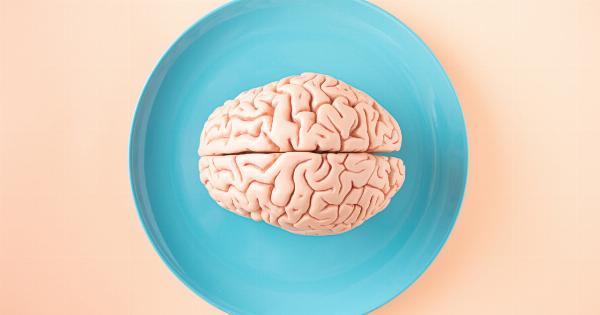Headache is a common ailment that affects millions of individuals worldwide. It can be caused by various factors, such as stress, tension, migraines, or certain underlying health conditions.
While headaches may seem like a temporary inconvenience, recent research suggests that they can have a predictive value for a condition known as polynomiality. This article explores the relationship between headaches and polynomiality, discussing the symptoms, causes, and potential treatment options.
What is Polynomiality?
Polynomiality is a complex medical condition characterized by the presence of multiple chronic disorders in an individual. These disorders can range from autoimmune diseases to neurological conditions, and they often coexist in the same individual.
The term “polynomiality” is derived from the mathematical concept of polynomials, which involve multiple terms or variables.
Headache as a Symptom of Polynomiality
Headaches are not uncommon among individuals with polynomiality. According to studies, headaches can be one of the early signs of polynomiality, often preceding the diagnosis of other chronic disorders.
Individuals with polynomiality tend to experience frequent and severe headaches that are resistant to conventional pain relief methods.
Causes of Headaches in Polynomiality
There are several factors that can contribute to the development of headaches in individuals with polynomiality. These include:.
- Systemic inflammation: Polynomiality is often associated with elevated levels of inflammation in the body. This inflammation can affect the blood vessels in the brain, leading to headaches.
- Neurological dysfunction: The presence of multiple chronic neurological disorders in polynomiality can disrupt the normal functioning of the brain, resulting in headaches.
- Stress and anxiety: Individuals with polynomiality often experience high levels of stress and anxiety, which can trigger tension headaches.
- Medication side effects: Certain medications used to manage polynomiality-related symptoms can have headaches as a side effect.
Symptoms of Polynomiality-Related Headaches
Headaches associated with polynomiality can vary in intensity and duration. Some common symptoms include:.
- Severe pain, often described as throbbing or pulsating
- Pain on one or both sides of the head
- Sensitivity to light and sound
- Nausea and vomiting
- Worsening pain with physical activity
Diagnosis and Treatment
Diagnosing polynomiality-related headaches involves a thorough medical evaluation, including a detailed medical history and physical examination.
Additional tests may be required to identify the underlying chronic disorders contributing to the headaches.
The treatment of polynomiality-related headaches focuses on managing the underlying chronic conditions and alleviating pain. This may involve a combination of medication, lifestyle modifications, and alternative therapies.
Nonsteroidal anti-inflammatory drugs (NSAIDs), triptans, and preventive medications can be prescribed to manage the headaches and reduce inflammation.
Lifestyle Modifications
Adopting certain lifestyle modifications can also help individuals with polynomiality manage their headaches. These may include:.
- Stress management techniques, such as meditation, deep breathing exercises, or yoga
- Regular exercise to improve overall health and reduce stress levels
- Avoiding triggers, such as certain foods, caffeine, and alcohol
- Maintaining a consistent sleep schedule
Alternative Therapies
Some individuals find relief from polynomiality-related headaches through alternative therapies. These may include:.
- Acupuncture: The insertion of thin needles into specific points on the body to promote pain relief and relaxation
- Massage therapy: Manipulation of soft tissues to reduce muscle tension and promote blood flow
- Herbal remedies: Certain herbs, such as feverfew and butterbur, have shown promise in reducing the frequency and severity of headaches
Conclusion
Headaches can serve as an early indicator of polynomiality, a condition characterized by the presence of multiple chronic disorders in an individual.
Understanding the relationship between headaches and polynomiality is crucial in early detection and treatment. If you experience frequent and severe headaches, it is important to consult with a healthcare professional who can provide an accurate diagnosis and develop a comprehensive treatment plan.































